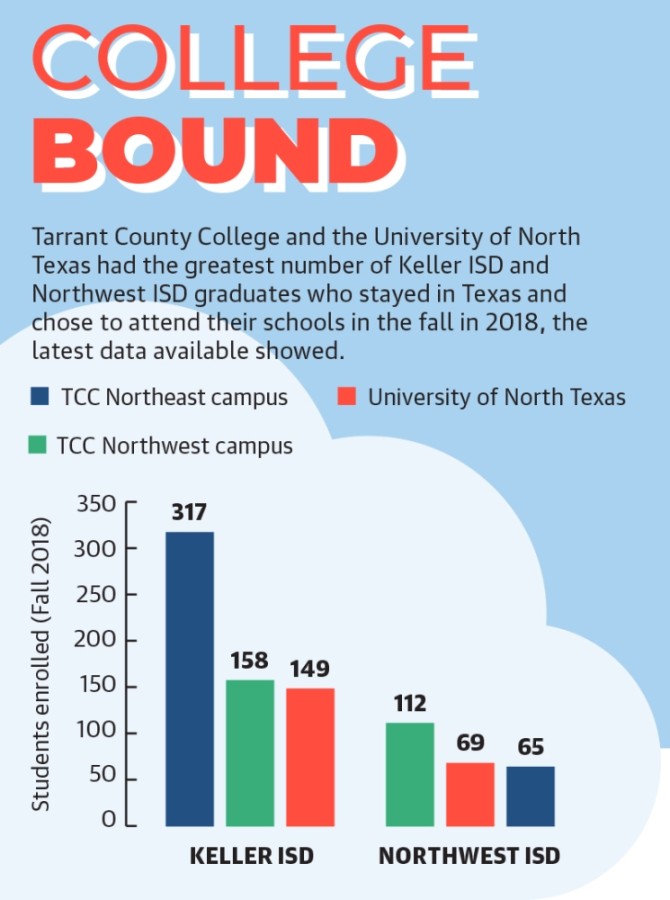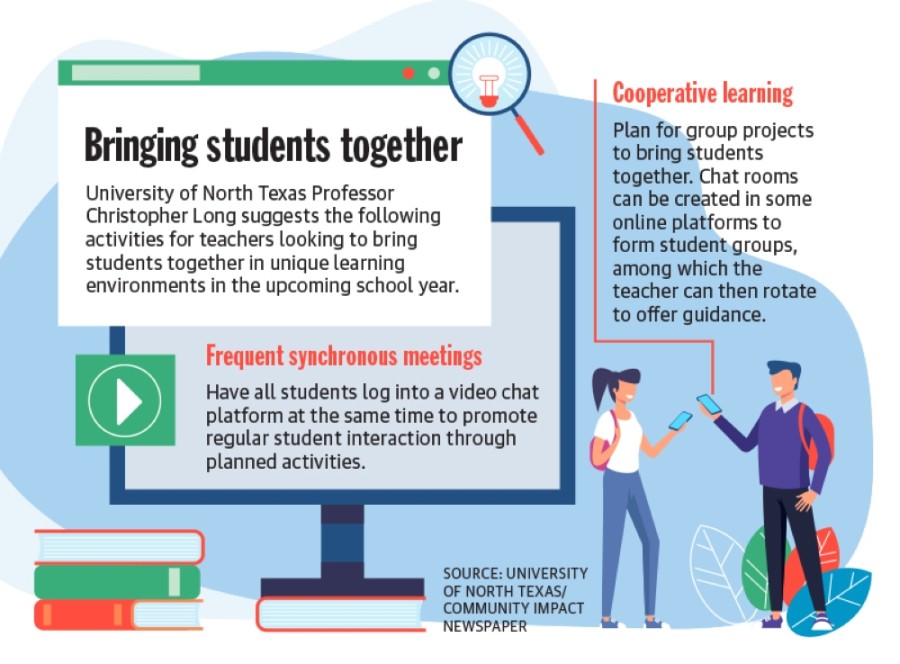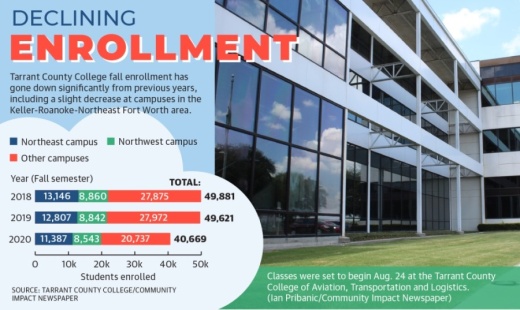 Due to the public health crisis surrounding the COVID-19 pandemic, institutions of higher learning have invested in new options for students while increasing safety measures and maintaining a flexible approach to class scheduling and instruction.
Due to the public health crisis surrounding the COVID-19 pandemic, institutions of higher learning have invested in new options for students while increasing safety measures and maintaining a flexible approach to class scheduling and instruction.“Students have been so resilient,” said Denesia Razo, director of workforce programs for the aviation school at TCC Northwest Campus at Alliance Airport. “Students are geared toward their goal and want to be as efficient as possible in their time with us. That’s something that’s been really wonderful to see.”
With a wide range of students, from working professionals to recent high school graduates, the aviation school, like many North Texas colleges, transitioned the majority of its lecture classes online in the spring.
The school has also had to adhere to additional regulations put in place by the Federal Aviation Administration, Razo said.
“We’ve had to not only work in our college parameters but also with those federal agencies. We actually shut the program down in the spring,” Razo said. “But you can’t learn to fly an airplane unless you’re in an airplane, and you can’t learn to fix one unless you’re around those components.”
Students were able to complete ground courses, or lecture courses, during the spring closure, and student pilots were back in the sky as of June 1, she said.
The college has also worked with students and realigned degree pathways to help as many students as possible graduate on time, Razo said.
Fall enrollment
A study by SimpsonScarborough of roughly 1,000 students in the U.S. predicted a 10% decline in first-time, full-time students at four-year institutions in the fall.
Similarly, one in every six college-bound seniors out of roughly 500 surveyed in a national poll taken by Art & Science Group LLC said they were considering not attending a four-year college or university as a full-time student.
“In times of disruption, we see a lot of impact, particularly to our community colleges, in terms of the initial decline in enrollment,” said Ray Martinez, deputy commissioner for academic affairs and workforce education with the Texas Higher Education Coordinating Board.
One consideration for many students is that colleges have shifted a number of classes to an online format.
“It’s too early to know how keeping most of our programs, except a handful of technical programs, online will impact fall enrollment, if at all,” TCC Executive Director of Communications Suzanne Groves said.
 That online shift has also created new perceptions for students about their post-COVID-19 learning environment, according to Christopher Long, assistant professor of K-12 science education at UNT.
That online shift has also created new perceptions for students about their post-COVID-19 learning environment, according to Christopher Long, assistant professor of K-12 science education at UNT.Long surveyed 230 students from the UNT education department during the spring semester.
“Students felt, before the break, like they were part of the class,” he said. “After the break, they kind of lost that feeling.”
According to Long, early conclusions from the study indicate a significant change in students’ responses to their learning environment before and during the pandemic.
The data provides evidence that educators may be able to use in order to better adapt classrooms in the fall for online classes, Long said.
Some options to engage students include video chats and group projects, he said.
“We can’t push our desks together and work anymore, but we can set up chat rooms,” Long said. “It’s going to take some sitting down and thinking, ‘What can I do to make the students feel like they’re part of the class?’”
Helping students
Many colleges will offer a combination of online, in-person and hybrid courses during the fall semester.
While a third of UNT students are choosing a fully online schedule in the fall, just 13% of UNT courses were online in 2019, Provost Jennifer Cowley said.
As a result, the university has started a new program that aims to combat isolation or health issues that freshmen may face in starting the year partially or fully online, she said.
“We [are trying] to be as flexible as we can to support our students,” Cowley said.
Campuses are also prepared to assist students with altered financial situations. UNT expects to have an increased need in the fall, Cowley said.
In July, two rounds of higher education funding totaling $175 million were issued from the Texas Emergency Education Relief Fund established through the coronavirus recovery bill.
According to the governor’s office, funding will be used to assist displaced workers and students whose families experienced negative financial effects due to COVID-19.
Funds will also be available to train displaced workers in high-demand fields and to maintain college enrollment for students whose families have been impacted by the pandemic.
“Some technical programs require hands-on training, but we are doing the best we can to make sure people are safe,” Razo said. “We have a very large footprint for our lab space, and protocols are in place in case of diagnosis or exposure. Faculty have been wonderful, and students are compliant.”
Elizabeth Uclés and Miranda Jaimes contributed to this report.






